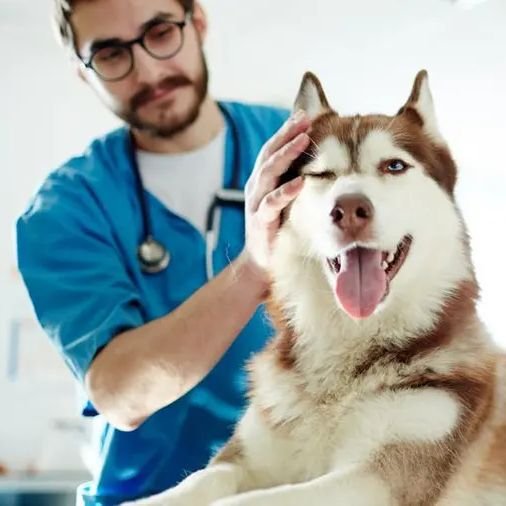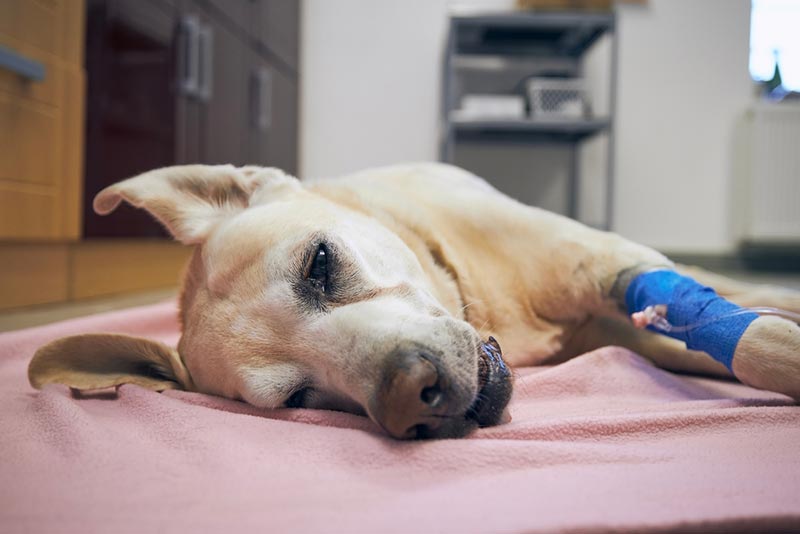
Lipomas are seen in around 16 percent of adult dogs; affecting one in 50 of all dogs every year. Although lipomas are generally harmless, their rapid growth and subsequent large size can be distressing and worrying to owners.
And despite the fact that these lumps of fat cells are not cancerous, vets do recommend removal of these unsightly tumors so that the tissue can be analyzed and the malignancy ruled out.
Cost of Dog Lipoma Surgery
Although the treatment of dog lipomas is widely similar across veterinary practices, there is often a variance in the price. This depends on your geographical location and the vet practice you use.
Lipomas in dogs are typically non-cancerous and harmless. However, they can sometimes grow very large or in uncomfortable places.
In this case, they may need to be removed. The cost to remove a dog lipoma can range anywhere from $500 to $2,000. The largest factors in the price are the number of diagnostics performed and the amount of surgical time.
Most dog lipoma removal costs will fall into the $500 to $800 range. This price includes pre-anesthetic bloodwork and take-home medications.
- Diagnosis
Lipomas should not be painful, quickly growing or bleeding. If this is the case, make a vet appointment right away. A normal lipoma can wait until your dog’s regular checkup.
Your veterinarian will look at the lump and decide if it is in-fact a lipoma. To determine this, they may recommend a fine needle aspiration test.
The suspected lipoma will be poked with a needle in several locations. The cells gathered will be subsequently examined under a microscope.
This test will show several characteristics of the mass such as detection of the presence of blood, fluid, cancerous cells, fat, etc.
If your veterinarian checks this cytology in-house, it can be as low as $15. If the case is more complicated, it will need to be sent to a professional laboratory. This will raise the cost to $90 to $150.
Most of the time, a suspected lipoma will only show fat on the cytology. This indicates that the lump is not cancerous.
Again, these lipomas do not need removal unless they become large or uncomfortable. Your veterinarian can best tell you if the mass needs to be removed or not.
However, a fine-needle aspirate only removes a small number of cells from the mass; meaning, that the test is not always 100% accurate. Also, a liposarcoma, which is the cancerous version of a lipoma, is virtually impossible to distinguish from a harmless fatty lump.
For that reason, most vets will favor removing the lipoma surgically.
- Health Checks

At the time of examining the lump, your veterinarian will also check the general health of your dog. This will also check if your dog is a good candidate for mass removal surgery.
Your veterinarian will likely recommend bloodwork and urinalysis to assess your dog’s anesthetic risk.
Most dogs that have lipomas are on the older side and should have a blood chemistry panel, a CBC, and a urinalysis.
All in all, these cost roughly $175 to $250. These tests will show the kidney and liver health of your dog, in addition to detecting many other diseases.
Based on the results of these tests, your veterinarian will choose the best methods of anesthesia to use.
Finally, the morning of the surgery, your veterinarian will do a physical exam on your dog and this will cost between $30 and $50. This exam ensures that your pet is well enough for surgery that day.
- Anesthesia
The price of anesthesia will mainly depend on the size of your dog. To go under anesthesia, your dog will receive an injection of drugs. While it is falling asleep, they will be intubated so that they can receive gas anesthesia and oxygen.
After this, your dog should be hooked up to a machine that monitors heart rate, pulse, and blood pressure. But do take note that not all clinics routinely use anesthetic monitoring.
Be sure to ask how your dog’s vital signs will be monitored during the procedure. Choosing an American Animal Hospital Association (AAHA) accredited hospital will make sure that the best practices for surgery are used.
Anesthesia medications and monitoring will be in the $50 to $200 cost range for most dogs. If multiple masses need to be removed and the anesthesia lasts longer, the cost could go up to $400.
Especially for older dogs, IV fluids are usually given during surgery. This involves placing an IV catheter and maintaining the correct rate of fluids.
This will increase the safety of anesthesia for your dog but will increase the cost of the procedure by roughly $30.
- Procedure
Once your dog is under anesthesia, the veterinary technician will prepare the surgery site. The area will be shaved and scrubbed clean.
This will make the area sterile and prevent any infection from the mass removal operation. There is usually no separate charge for this preparation.
The veterinarian will surgically remove the lipoma and sew the area back up with suture. This costs around $400 per hour and $15 per pack of suture.
The time the surgery takes will vary greatly depending on the size and number of lipomas to be removed.
One small lipoma should take roughly 15 minutes and one pack of suture. A very large lipoma could take an hour and 3 packs of suture.
- Post Operation
After your pet’s surgery is complete, the surgery site will be cleaned and sterilized. If the wound is in an area on your dog’s body where it could be damaged by scratching or rubbing, a dressing will probably be used to protect the site.
The charge for wound dressing is typically around $20.
Only a pathologist can determine with certainty if the mass removed was cancerous. It is rare for lipoma-like masses to turn out to be cancer, but this test can offer peace of mind.
Sending out the mass to a pathologist costs $100 to $300. The price mainly depends on the size of the mass.
Your dog will likely be sent home with pain medication, antibiotics, and an e-collar.
The antibiotics should cost under $30 unless your veterinarian prefers a long-acting injectable antibiotic. This will add significant cost and can be in the $100 range.
For otherwise healthy dogs, pain medication will be in the $30 range. If it has other medical concerns, the cost of pain medication may be over $100.
An e-collar will need to be worn while the surgery site heals. It will cost $10 to $30, depending on your dog’s size.
Straightforward lipoma surgery sites usually heal well and quickly. You will need to take your dog to see your vet again ten days or so following the surgery to have the stitches removed. Follow-up consultations usually cost around $30, but many clinics include them in the surgery price so that you don’t have to pay during the follow-up.

Very helpful!